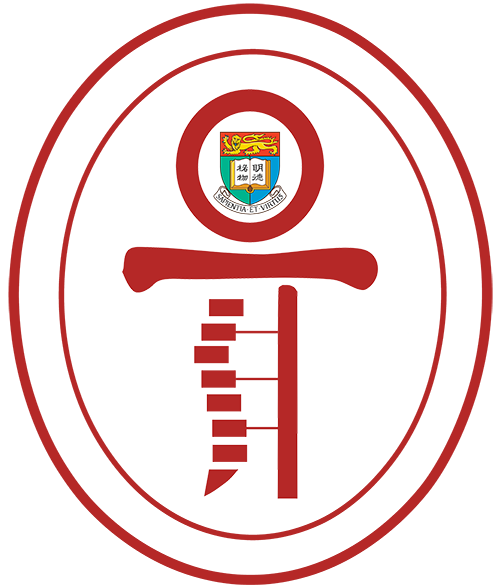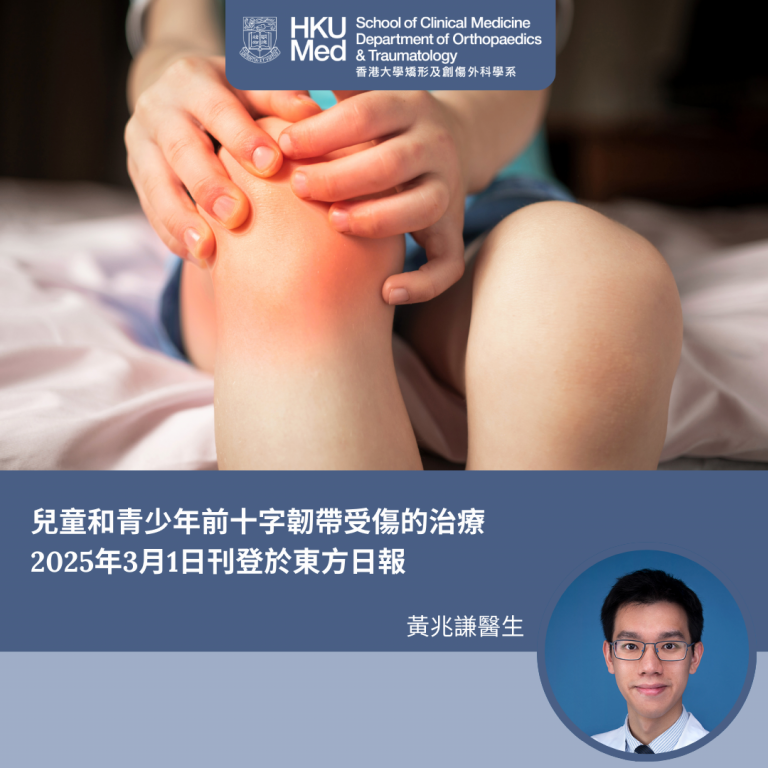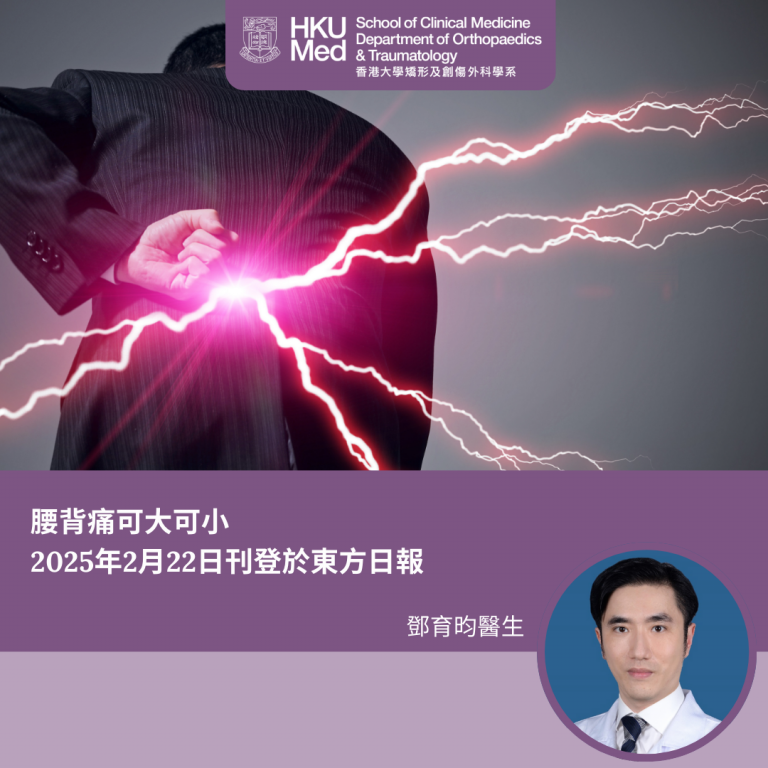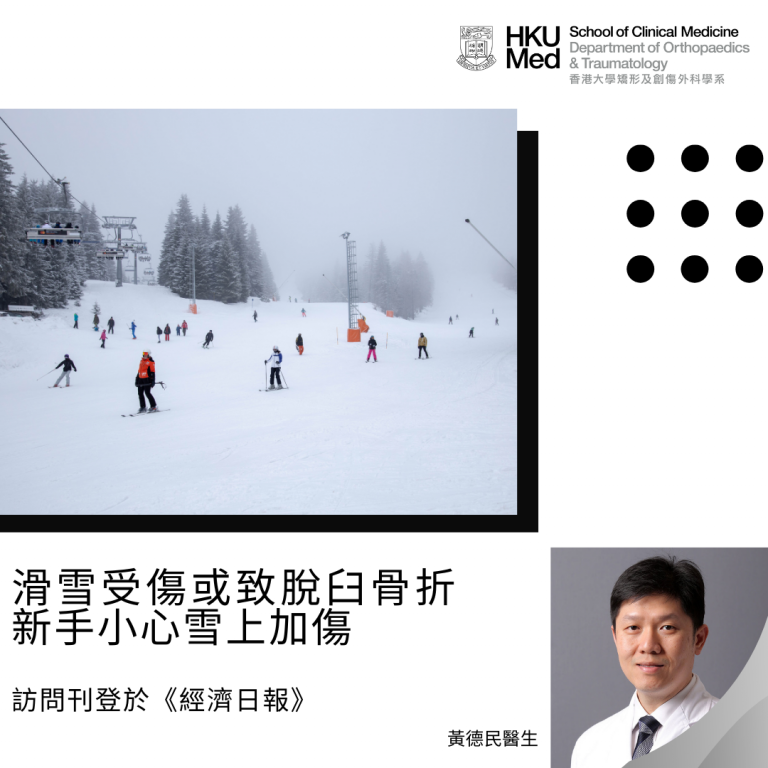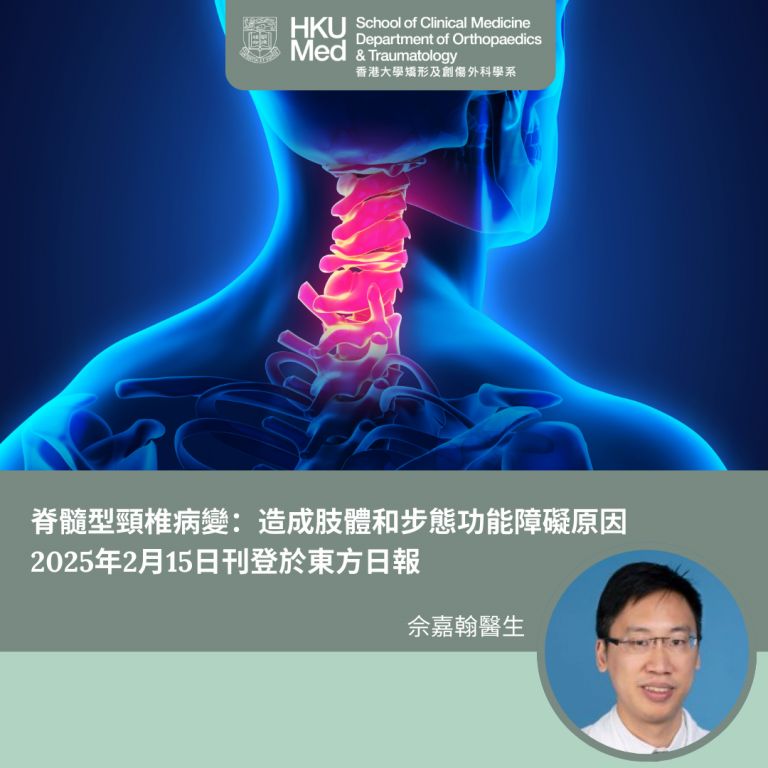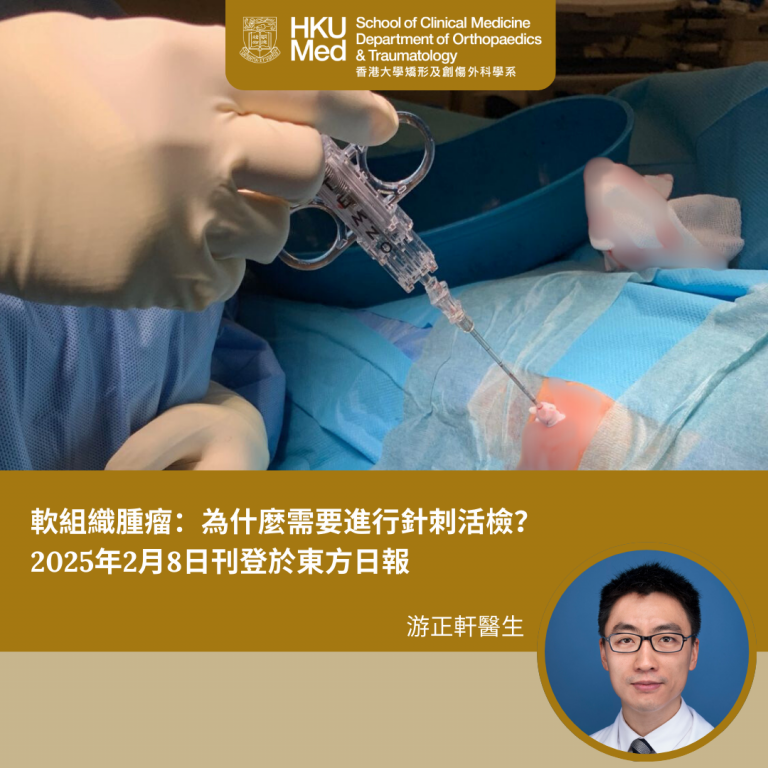鍾培言醫生
香港大學李嘉誠醫學院
矯形及創傷外科學系臨床副教授
脊柱側彎並不是寒背,而是脊骨向左或右彎曲,呈S型或C型,從外觀可以看到身體側傾。在兒童身上最常見的脊柱側彎是原發性脊柱側彎(AIS),佔病例高達 9成,其中又以女比男多,發病原因暫時未明。
父母很多時候會擔心孩子坐姿不良、打羽毛球單手操拍、長期在同一側揹沉重書包會導致脊柱側彎,事實上,暫時未有研究證據支持這些說法。長期坐姿不良可導致腰痛或提早退化,但絕不會影響脊柱的彎度。
脊柱側彎可根據病情分為三種:輕度(10度至20度)、中度(20至40度)及嚴重(40度或以上)。治療方面,如果彎度低於25度,一般會持續觀察。處於發育階段的孩子,或會建議使用腰架矯正,直至骨骼成熟為止。以女孩為例,成長至14歲時骨骼已大致成熟。不過,長期帶著腰架或會有肌肉萎縮及骨質疏鬆的風險,因此,醫生會通過盤骨及手骨的骨齡去作出判斷何時開始、以及何時結束使用腰架。
如果病人骨骼發育大致完成,彎度又逾50度,醫生會建議他接受融合手術,在脊骨放入螺絲及鋼條作固定。年紀太小的病人可使用磁力控制生長棒矯正,過往的傳統做法是把鋼製的生長棒植入體內,阻止脊柱繼續彎曲,並需每半年開刀一次,以人手去調較生長棒的長度去配合孩子的身高。而現時使用的磁力生長棒,病人只需每月到醫院覆診,讓醫生利用磁鐵在體外調較,不用住院之餘,更可免除手術之苦。
<刊載於《am730》,2019年10月28日>
The information contained in this website is solely for the purpose of promoting academic exchange. None of such information is intended to be for, nor shall therefore be treated as, dissemination of professional service information of doctors to the public. If you are interested in obtaining any information about the professional practice of our clinical staff members, please visit the website of HKU Health System at
https://hkuhs.med.hku.hk/en/homepage/our-professional.
© 2025 Department of Orthopaedics and Traumatology, The University of Hong Kong. All rights reserved.
The information contained in this website is solely for the purpose of promoting academic exchange. None of such information is intended to be for, nor shall therefore be treated as, dissemination of professional service information of doctors to the public. If you are interested in obtaining any information about the professional practice of our clinical staff members, please visit the website of HKU Health System at
https://hkuhs.med.hku.hk/en/homepage/our-professional.
© 2025 Department of Orthopaedics and Traumatology, The University of Hong Kong. All rights reserved.

